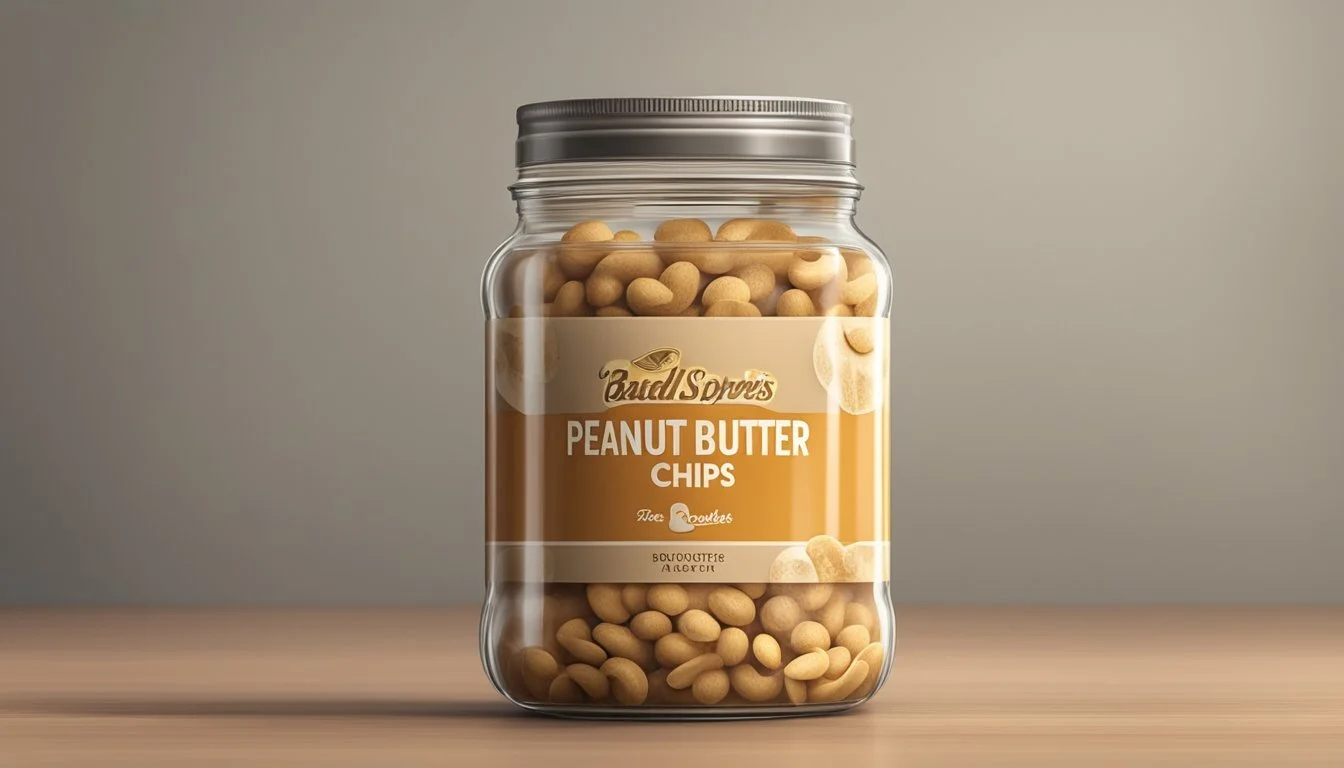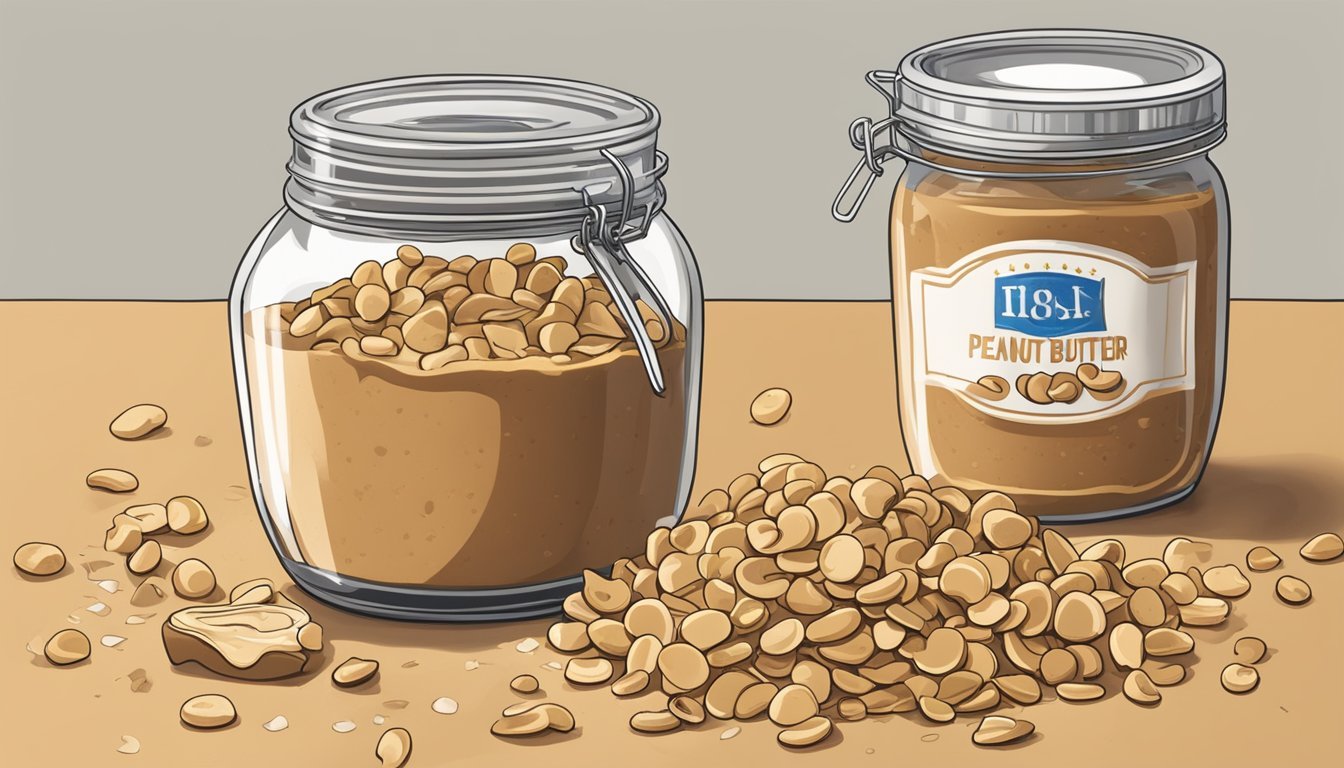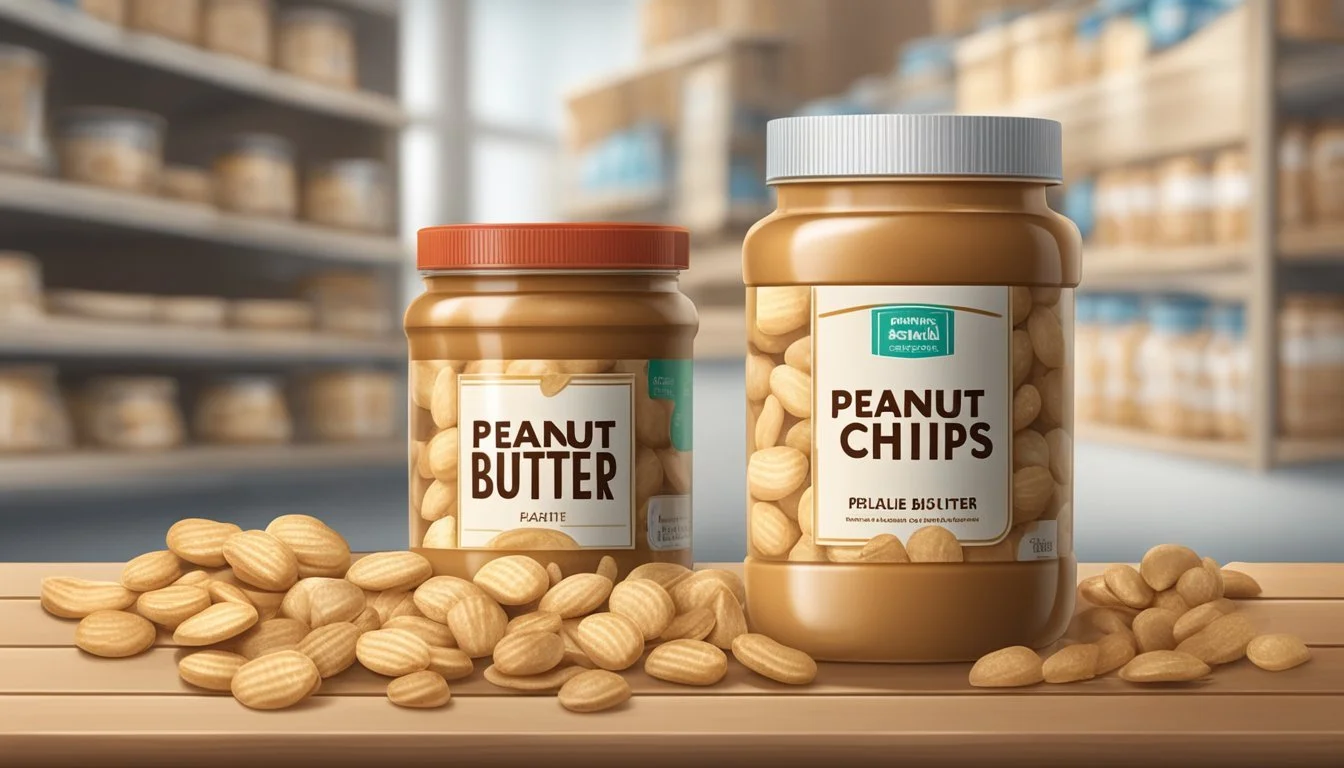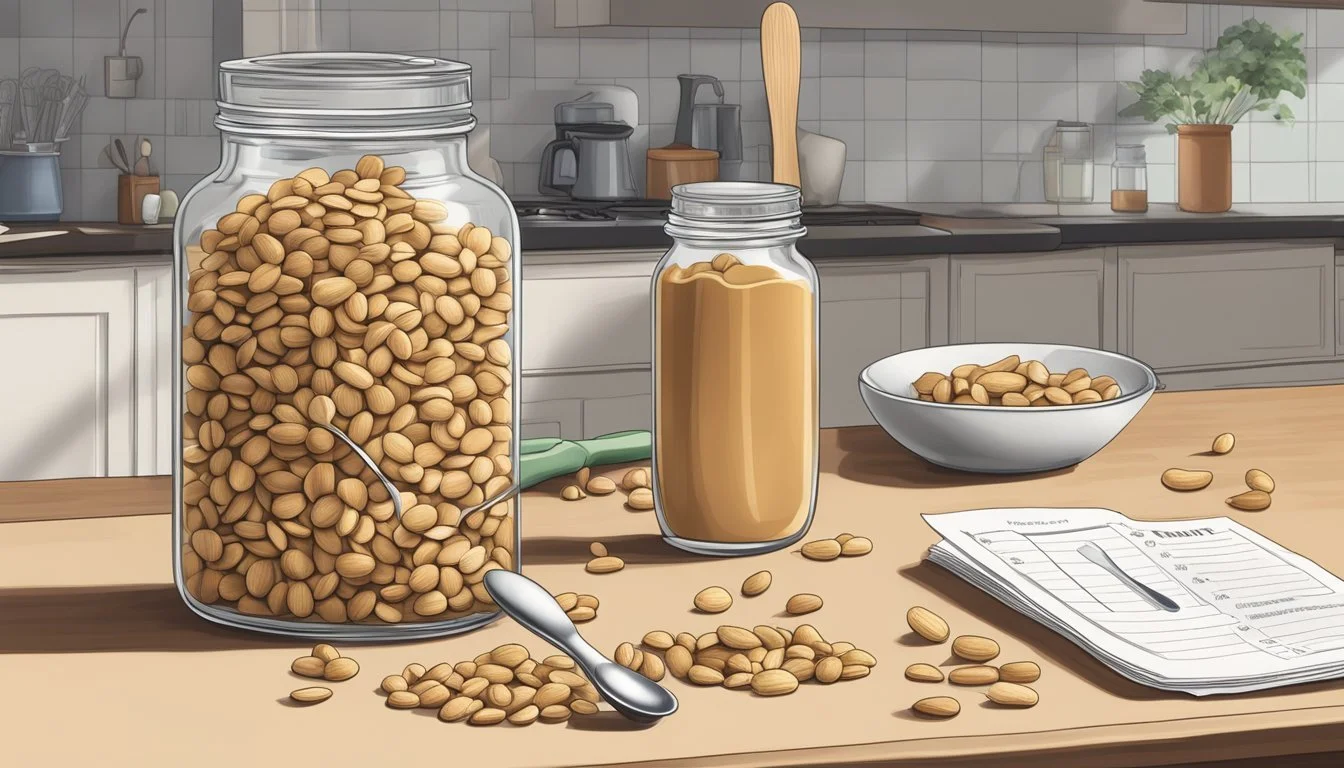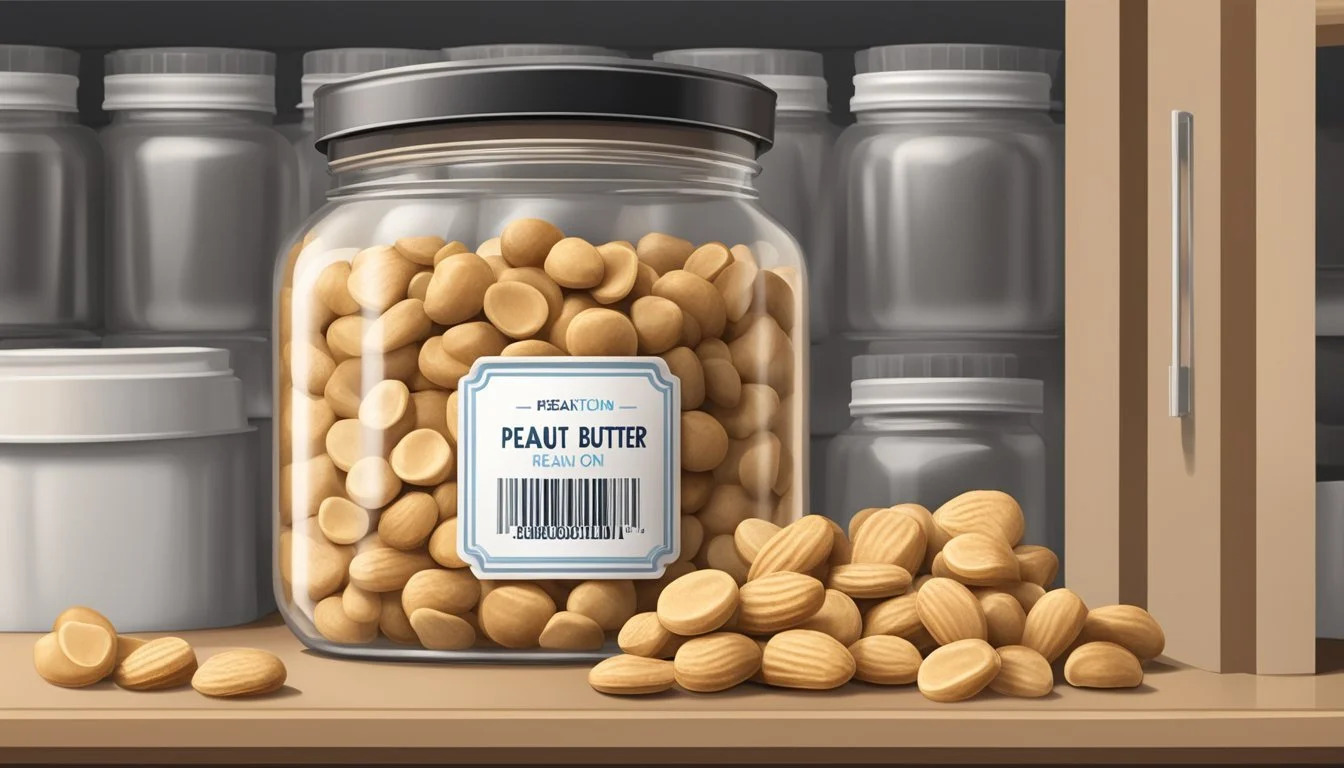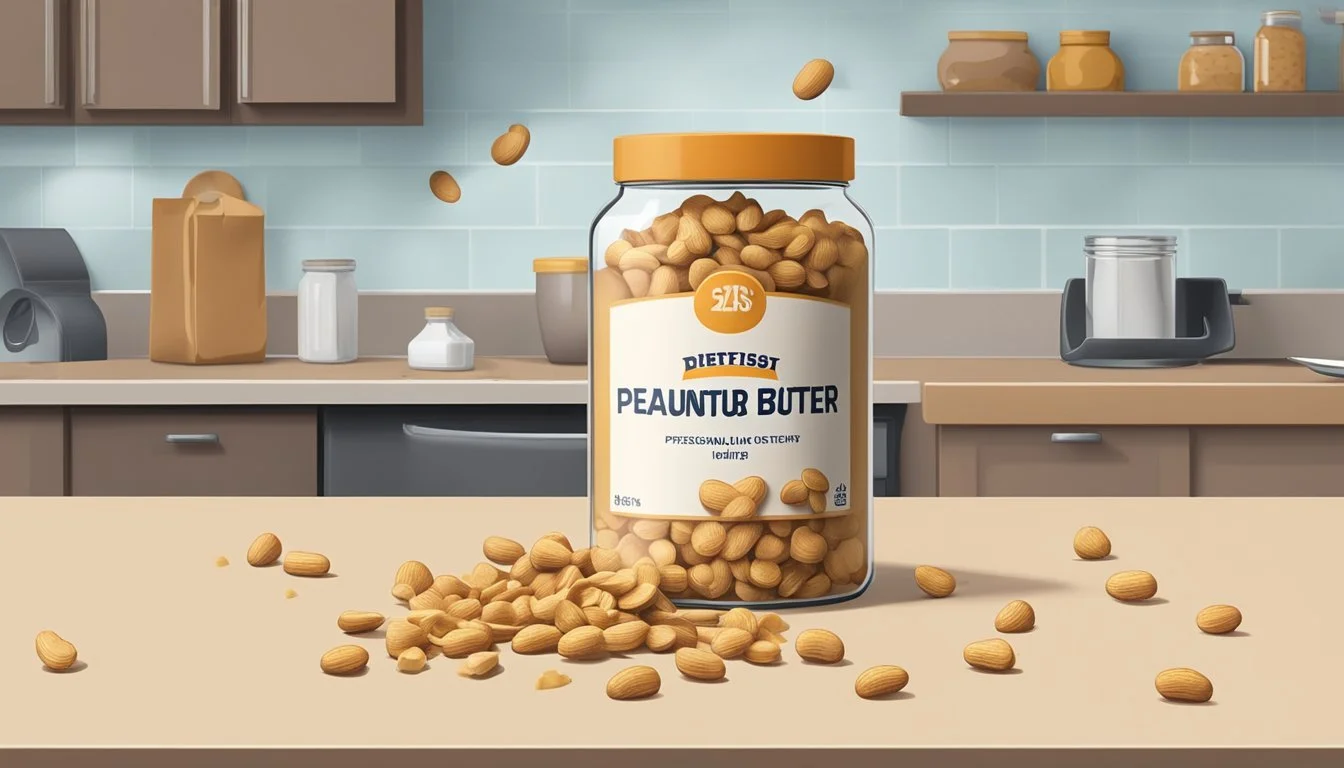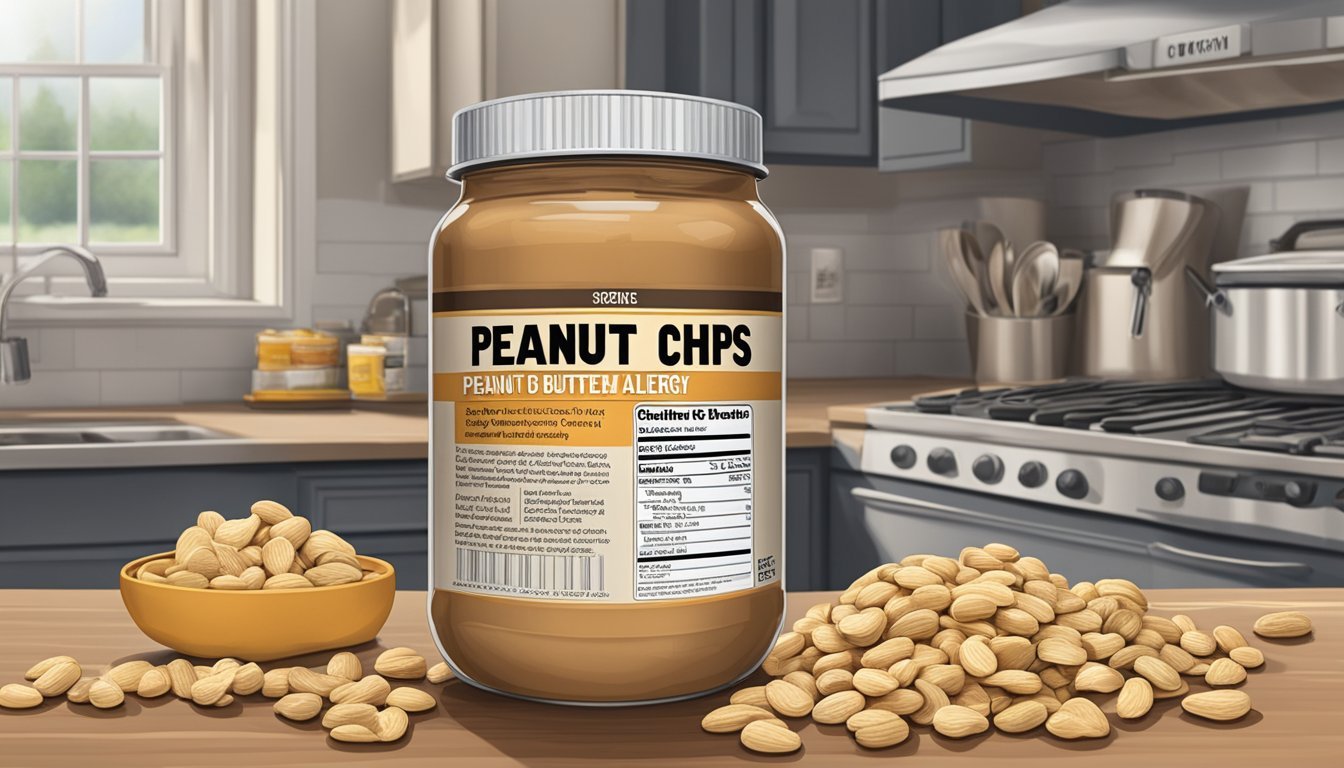Do Peanut Butter Chips Go Bad?
Shelf Life and Storage Tips
Peanut butter chips are a popular ingredient in many baked goods, adding a rich and nutty flavor to cookies, muffins, and more. Yes, peanut butter chips can go bad, especially if they are not stored properly. To ensure they remain fresh and safe to eat, it is important to keep them in a cool, dry place away from direct sunlight and moisture.
Typically, peanut butter chips will maintain their best quality for several months when stored in an airtight container or sealed bag. Some manufacturers include a "best by" date on the packaging, which can serve as a helpful guideline for peak freshness. Even after this date, though, they can still be safe to consume if there are no signs of spoilage, such as an off smell or visible mold.
Proper storage conditions, like using a pantry or a cupboard, can significantly extend the shelf life of these delicious morsels. In areas with high humidity, refrigeration or even freezing may be advisable to prevent them from going bad.
Understanding Food Spoilage
Knowing the factors that cause food to spoil, recognizing common signs of spoilage, and understanding expiration labels are crucial for ensuring safety and preventing foodborne illnesses.
Factors Influencing Spoilage
Several factors influence how quickly food spoils. Temperature plays a significant role; foods stored at higher temperatures generally spoil faster due to increased microbial activity.
Moisture levels also impact spoilage. High moisture content provides an ideal environment for mold and bacteria.
Light exposure can degrade food quality, especially for items like oils, leading to rancidity.
Packaging is another critical factor; inadequate sealing can allow air, moisture, and contaminants to impact food quality.
Common Signs of Spoilage
Recognizing the signs of spoilage helps in making safer food choices. Mold growth is one of the most apparent indicators; spotting any mold requires immediate disposal of the food.
Changes in odor are also telling. A sour, rancid, or off smell usually signals spoilage.
Texture changes are another sign. Foods might become slimy, sticky, or excessively dry.
Color alterations can indicate spoilage as well. Darkened or faded colors are often a giveaway that the food is no longer safe to consume.
Spoilage vs. Expiration Dates
Understanding expiration dates helps in managing food safety. Expiration and best-by dates provide guidelines on when food is at its best quality, not necessarily when it becomes unsafe.
Use by dates are more stringent and indicate the last day the food should be consumed for safety reasons.
It's important to use sensory checks in conjunction with these dates. Even if the date has not passed, signs like odor and mold should not be ignored.
Storing food correctly and paying attention to these dates and physical signs can reduce the risk of consuming spoiled food.
Specifics of Peanut Butter Chips
Peanut butter chips are beloved for their rich flavor but they do have unique ingredients and storage needs. Their composition and shelf life nuances are important for anyone storing or using them in recipes.
Ingredients and Preservation
Peanut butter chips typically contain sugar, hydrogenated palm oil, peanut butter, along with other stabilizers and preservatives.
Hydrogenated palm oil contributes to the chips' stable shelf life but adds to the fat content. The sugar content provides sweetness and acts as a preservative.
Stabilizers and preservatives ensure that the chips do not spoil quickly, preserving their texture and flavor for extended periods under proper conditions.
Variety and Fat Content
Different brands may offer variations of peanut butter chips, which can affect their taste and texture. Some chips might include chocolate or be combined with other flavors for a unique twist.
The fat content primarily comes from the peanut butter and palm oil, which can vary across brands. It's crucial to check labels if you're concerned about fat intake.
Natural peanut butter based chips may have different storage concerns compared to chips with hydrogenated oils due to the absence of additives.
Shelf Life Nuances
When stored properly, peanut butter chips have a remarkable shelf life. Unopened packages can be kept for up to 15 months in a cool, dry place.
Once opened, it is vital to maintain an airtight seal to keep the chips from becoming stale or rancid.
Improper storage, such as exposure to heat or moisture, can shorten their usability, causing them to develop off-flavors or spoil. Keeping them in the pantry away from direct sunlight is advisable.
Optimal Storage Practices
Storing peanut butter chips correctly is essential to extend their shelf life and maintain their quality. This includes both short-term and long-term storage strategies, recognizing signs of spoilage, and techniques to keep the product fresh for extended periods.
Short-Term Storage
Peanut butter chips should be stored in a cool, dry place, such as a pantry or cupboard. The temperature should be stable to prevent melting or softening of the chips.
An airtight container is optimal to protect the chips from moisture and air, which can affect their texture and flavor. If left in their original packaging, ensure it is resealed tightly after each use to prevent exposure.
Long-Term Storage Considerations
For extended storage, refrigeration is highly recommended. Keeping peanut butter chips in the fridge helps maintain their freshness and prevents the oils within them from going rancid.
If planning to store the chips for several months, freezing is a beneficial option. Seal the chips in an airtight container or freezer bag to protect them from freezer burn. Frozen chips can last up to a year without a significant loss of quality.
Recognizing Spoiled Products
It's important to check for signs of spoilage before using the peanut butter chips. One clear indicator is a change in smell; spoiled chips may emit a rancid or off odor.
Another sign is a change in texture. Chips that have absorbed moisture may appear discolored or have a sticky or unusually hard texture.
If there's any doubt, it's best to discard the product to avoid potential health risks.
Extending Shelf Life
To maximize the shelf life of peanut butter chips, always use airtight containers. Keep the storage environment as cool and dry as possible, away from direct sunlight or heat sources.
By storing the chips in the fridge or freezer, you can significantly extend their usability. Also, minimizing the product's exposure to air and moisture will ensure it remains in optimal condition for future use.
Effective storage not only preserves the product’s flavor and texture but also ensures that it is safe to consume for extended periods.
Usage in Recipes
Peanut butter chips are versatile ingredients that add unique flavors and textures to a wide range of dishes. From baked goods to snacks, they can be incorporated in various creative and delicious ways.
Culinary Roles of Peanut Butter Chips
Peanut butter chips are commonly used in desserts. They can be added to cookies, brownies, cakes, and muffins to bring a rich, nutty flavor. These chips melt slightly during baking, creating pockets of creamy peanut butter that enhance the texture and taste of the finished product.
Beyond traditional baking, they can be included in homemade granola, trail mix, or yogurt. These combinations provide a satisfying snack, offering a burst of peanut butter flavor that pairs well with other ingredients like oats, dried fruits, and nuts.
They are also commonly used as toppings for pancakes and waffles. These chips can be sprinkled on batter before cooking or melted into a syrup for an indulgent breakfast treat.
Recipe Adaptations
Peanut butter chips can be used to adapt traditional recipes, turning a simple baked good into a peanut butter-flavored delight. For instance, replacing chocolate chips with peanut butter chips in chocolate chip cookies can result in a distinctive peanut butter cookie experience.
In more elaborate recipes, these chips can enhance peanut butter fillings in layered desserts. For example, adding them to the filling of a cake or pie can intensify the peanut butter taste.
They can also be melted and used in frostings or glazes for cupcakes, providing a smooth and creamy texture that complements various cake flavors. Additionally, combining them with melted chocolate to create a peanut butter cup-like topping for brownies or other desserts can add a gourmet touch.
By experimenting with these chips in different recipes, one can create unique and tasty variations that highlight the delicious flavor of peanut butter.
Preventive Measures
Proper handling and monitoring of peanut butter chips can extend their shelf life significantly. Taking steps to prevent exposure to harmful conditions will help maintain their quality and safety.
Proper Handling and Opening
When opening a package of peanut butter chips, ensure hands and utensils are clean to avoid introducing microorganisms. Reseal the package tightly after each use. If the original packaging is not resealable, transfer the chips to an airtight container.
Storage Tips:
Keep the container in a cool, dry place away from direct light and heat.
Refrigerating opened peanut butter chips can slow oxidation and spoilage.
Avoid freezing, as extreme temperatures can impact texture and flavor.
Attention to these details greatly reduces the risk of contamination and rancidity.
Monitoring and Rotation
Regularly check the condition of both unopened and opened peanut butter chips. Look for any signs of spoilage, such as discoloration or off smells, which indicate oxidation or microbial growth.
Rotation Plan:
Adopt the "First In, First Out" (FIFO) method to use older stock first.
Label containers with the date of storage to keep track.
Consistent monitoring helps in identifying problems early. Implementing a rotation plan ensures fresher stock is used timely, preventing chips from going bad before consumption.
Nutritional Aspects
Peanut butter chips offer a unique blend of nutrients that can contribute to your dietary intake. They are rich in fats and carbohydrates and provide energy, though they can also be high in sugar and sodium.
Nutrient Content Overview
Peanut butter chips are primarily composed of fat and carbohydrates. A typical serving size contains around 8-10 grams of fat, which includes heart-healthy monounsaturated fats. These fats are beneficial for maintaining cholesterol levels.
They also provide 14-16 grams of carbohydrates per serving, with a portion of this coming from sugars. The high carbohydrate content makes them a quick energy source.
In terms of protein, peanut butter chips offer a small amount, usually around 2 grams per serving. This isn't as high as pure peanut butter but still contributes to the nutrient profile.
Health Considerations
When considering the health impacts of peanut butter chips, it's important to be aware of their sodium and sugar content. Many commercial varieties contain added sugars, contributing to daily sugar intake.
They also have sodium levels between 50-100 milligrams per serving, which can impact blood pressure if consumed in large quantities.
The fat present in peanut butter chips is mainly unsaturated. This type of fat is healthier compared to saturated fats, contributing to better heart health.
Due to their calorie density, peanut butter chips can significantly impact daily energy intake. It's essential to consume them in moderation to avoid excess calorie consumption.
Understanding Labels and Dates
Understanding the various labels on peanut butter chip packages is crucial for ensuring they remain safe and enjoyable to consume. Key date labels include "expiration date," "best by," and "use by," each providing different information about the product's shelf life.
Deciphering Date Labels
"Expiration Date" indicates the last date the manufacturer guarantees the product's optimal quality. After this date, the peanut butter chips may not perform as expected in recipes.
"Best By" dates suggest when the product will be at its peak flavor and texture. While peanut butter chips may still be safe to consume after this date, there could be a decline in taste and quality.
"Use By" dates are the manufacturer's recommendation for the last date to use the product while it's at its best quality. Unlike expiration dates, this label focuses more on optimal taste rather than safety.
Shelf life varies depending on storage conditions. To maximize shelf life, keep peanut butter chips in a cool, dry place, away from direct sunlight and moisture. Proper storage can help maintain their quality beyond labeled dates.
Product Label Insights
Peanut butter chip labels provide valuable nutritional information and ingredient lists. Ensuring you understand what's in the product can help you make informed choices, particularly if there are dietary restrictions.
Labels often include serving sizes, which can be helpful for portion control. Check for any allergen warnings if you are sensitive to ingredients typically found in peanut butter chips, such as peanuts or soy.
To decode Julian date codes, which some manufacturers use, refer to the company’s resources for information on production dates. This can provide additional context on how long the product might retain its quality.
Manufacturers also list storage instructions on the packaging. Follow these guidelines to preserve the taste and texture of peanut butter chips.
Frequently Encountered Issues
Peanut butter chips can face various storage challenges like oil separation, rancid taste and odor, and stale or metallic tastes. Understanding these issues can help in proper storage and preserving quality.
Oil Separation and Texture Changes
Peanut butter chips can often experience oil separation. This is a common issue with peanut butter-based products due to the natural oils in peanuts.
When the partially hydrogenated oils separate, it can alter the chip's texture. This may make them feel greasy or even too dry if the oil has pooled at the bottom.
To address this, it's important to store peanut butter chips in a cool, dry place. Keeping them in an airtight container can prevent moisture and air from exacerbating separation. Stirring or shaking the container before use can help re-incorporate the oils.
Rancid Taste and Odor
Rancidity is a significant issue. Peanut butter chips can develop a rancid taste or foul odor if stored improperly or kept for too long. Rancidity occurs when oils oxidize, leading to unpleasant bitter, metallic, or soapy flavors.
Detect this early by smelling the chips. A foul or odd smell is a key sign that they may have gone bad. Tasting a small amount can also help confirm rancidity, but ensure it is done with caution.
Proper storage in a cool, dark place can slow oxidation. Using airtight containers reduces exposure to air, further preventing rancidity.
Addressing Stale or Metallic Tastes
Staleness and a metallic taste can develop in peanut butter chips not stored correctly. Stale chips lose their crisp texture, becoming soft and unappealing. A metallic flavor might indicate the presence of oxidation products or contamination.
To maintain freshness, it's crucial to keep the chips away from moisture and air. Vacuum-sealing or storing in airtight containers can help. Metal containers should be avoided as they may contribute to metallic tastes.
Rotating stock and using older chips first can ensure fresher product use. This procedure helps avoid chips becoming stale or developing off-flavors over time.
Safety and Allergies
When consuming peanut butter chips, there are important safety considerations related to allergies and potential product recalls. These aspects are crucial to ensure the wellbeing of individuals, especially those with food sensitivities or serious allergic reactions.
Allergic Reactions and Sensitivities
Peanut butter chips contain real peanuts, which are one of the most common allergens. Allergic reactions to peanuts can range from mild symptoms like hives or stomach discomfort to severe anaphylactic reactions, which require immediate medical attention. Nut butter allergies, including those related to peanut butter, are particularly prevalent among children.
Sesame, another common allergen, has emerged as a potential concern and can sometimes be found in products processed in the same facility. This cross-contamination increases the risk for individuals allergic to sesame, as even trace amounts can trigger a response. Always check ingredient lists and may-contain statements to avoid risks associated with peanut and other nut butter sensitivities.
Product Recalls and Safety
Product recalls can occur if peanut butter chips are found to be contaminated or if they pose an undisclosed allergen risk. These recalls are critical to prevent accidental consumption of allergens. Customers are advised to stay informed about recent recalls through reliable sources such as the FDA’s recall announcements.
In addition, ensure that products do not contain preservatives like sodium benzoate or other additives that might pose health risks. Proper storage also plays a significant role in safety, preventing spoilage and maintaining the quality of the peanut butter chips. Store them in a cool, dry place and observe the expiration dates to avoid any adverse effects.


